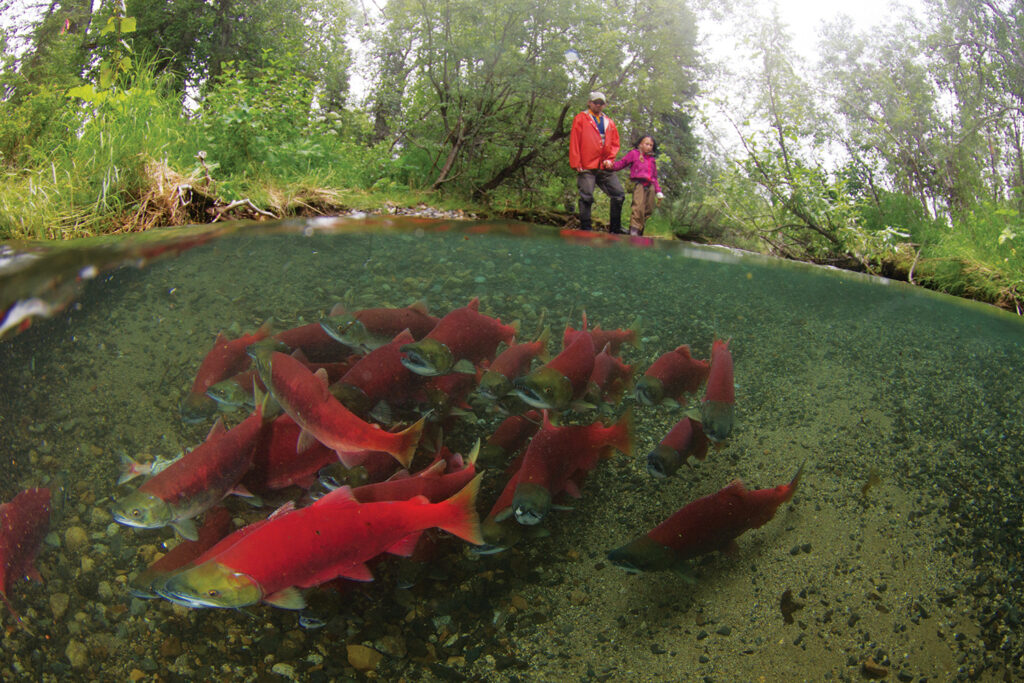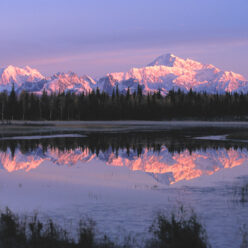The migration of Alaskan salmon is a remarkable migratory event that showcases the ability of one species to collectively move for reproductive purposes. In fact, recent studies have shown that salmon may use the magnetic field of the Earth to guide their migration patterns. In Alaska, there are five recognized species of salmon including pink (humpy), chinook (king), chum (dog), coho (silver), and sockeye salmon. Salmon will migrate upstream to return to their home streams and river to reproduce and ensure the survival of their offspring. As you can see from videos and pictures, the migration of salmon is unlike any other marine migration people have witnessed. The environment of Alaska is serene and it is only fitting that such a unique experience occurs in the rivers and streams there.
Few species of salmon will even travel upwards of 2000 miles to return to their spawning ground in time for the breeding season. Importantly, once a male and female salmon reproduce and the female deposits the eggs in a redd, a hole in the riverbed, then both salmon will die. The annual migration of salmon depicts perfectly the lifecycle of this fish from fertilization to death. This unique event draws thousands of Alaskan fishers and bystanders to watch the migration each year.
However, Alaskan salmon are facing more challenges than ever before. For example, in Alaska, the temperature is rising causing the average temperature of rivers to rise and become lethal to some species of salmon. In one case, salmon in the Ugashik River refused to swim upstream since the water was significantly warmer upstream. Instead, they remained in the cooler and deeper water and were never able to reproduce during the breeding season. Climate change is also becoming a pervasive issue because it is permanently affecting salmon migration patterns and river habitat. Humans are also negatively affecting salmon populations through river water diversion and straying hatchery salmon so that they do not return to the original place they were hatched. The migration of salmon is a unique display of the circle of life and is a must-see experience before it becomes irreversibly affected by climate change.

